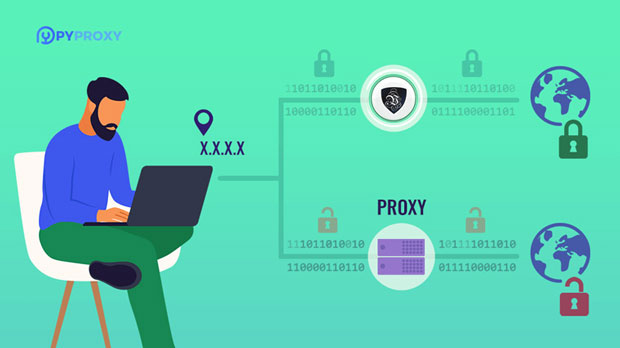When choosing a proxy for internet browsing or data management, two common options are HTTP proxies and sock s5 proxies. Both have their advantages, but the decision ultimately depends on balancing speed and price. While HTTP proxies are often considered faster and more affordable, SOCKS5 proxies offer more flexibility and enhanced security features at a slightly higher cost. The goal is to understand how these factors impact the user experience and how to make the best choice based on specific needs. This article will analyze the speed, price, and other key factors to help you make an informed decision. Understanding the Basics: HTTP Proxy vs. socks5 proxyBefore diving into the comparison of speed and price, it's important to first understand the basic differences between HTTP proxies and SOCKS5 proxies. These proxies serve different purposes and operate using distinct protocols.An HTTP proxy is designed to handle HTTP (Hypertext Transfer Protocol) traffic. It works specifically with web browsers, redirecting web requests between the user and the website. HTTP proxies are commonly used for web browsing, ensuring anonymity, or bypassing geographical restrictions. Due to their focus on HTTP traffic, they typically offer high speeds and are relatively cost-effective, as they don’t require heavy encryption or advanced processing.On the other hand, SOCKS5 (Socket Secure 5) is a more versatile proxy protocol. It can handle a wide variety of traffic beyond HTTP, including email, file transfers, and peer-to-peer connections. SOCKS5 proxies are designed for a broader range of activities, including secure file sharing and online gaming. Unlike HTTP proxies, SOCKS5 proxies are generally slower and more expensive because they handle all types of traffic and support additional security features, such as authentication and encryption.Speed: A Critical Factor in Proxy SelectionSpeed is one of the most important factors to consider when choosing a proxy, particularly for activities that require real-time interaction, such as browsing, streaming, or gaming.HTTP proxies are generally faster than SOCKS5 proxies for basic web browsing. Since they only handle HTTP traffic, their workload is lighter. As a result, the latency is lower, and they tend to offer faster response times, especially when it comes to tasks like loading websites or accessing web-based content.SOCKS5 proxies, however, support a wider range of traffic and can be slower than HTTP proxies because they process more data types. The additional security and encryption features offered by SOCKS5 proxies, such as support for authentication and data integrity, add overhead that can reduce speed. However, for certain activities that require high security and flexibility, such as torrenting or accessing non-HTTP protocols, SOCKS5 proxies may still offer sufficient speed, albeit with a slight delay.The specific speed of both proxy types can vary depending on factors like server load, geographic location of the proxy server, and the internet connection used. In general, if your main concern is speed for simple web browsing, an HTTP proxy is usually the better option.Price Comparison: HTTP Proxy vs. SOCKS5 ProxyPrice is another important factor in choosing between HTTP proxies and SOCKS5 proxies. Generally, HTTP proxies are more affordable than SOCKS5 proxies because they are simpler to set up and require less processing power.HTTP proxies are cost-effective for basic internet browsing and tasks where high-level security is not a priority. Since they don't need to handle complex data traffic or employ advanced encryption techniques, their price remains lower. Many proxy service providers offer HTTP proxies at affordable rates, making them a popular choice for users who only need to access websites or bypass regional restrictions.On the other hand, SOCKS5 proxies are typically more expensive due to the additional capabilities they offer. They are designed for a broader range of uses, such as secure file sharing, peer-to-peer connections, and encrypted communication. The added complexity and flexibility of SOCKS5 proxies require more resources, which can increase the price. Additionally, if users require high-level security features such as encrypted traffic or data integrity, they may need to pay a premium for SOCKS5 proxies.Choosing between the two depends largely on the budget and requirements. For users who only need a proxy for browsing, an HTTP proxy is a more cost-effective choice. If, however, the user needs to handle sensitive data or diverse types of internet traffic securely, a SOCKS5 proxy might justify the extra cost.Security and Flexibility: When to Choose SOCKS5 ProxiesAlthough HTTP proxies are faster and cheaper, they fall short in certain areas of security and flexibility. SOCKS5 proxies stand out due to their enhanced features. For instance, SOCKS5 supports encryption, meaning that all traffic is secure and less prone to interception. This feature is particularly important when engaging in sensitive online activities, such as handling confidential data or making secure transactions.Additionally, SOCKS5 proxies support a wider variety of traffic types, not just HTTP. This flexibility allows users to perform activities like file transfers (FTP), email (SMTP), and peer-to-peer networking with greater ease. This makes SOCKS5 a better choice for users involved in complex online activities or those who require comprehensive privacy and security.While HTTP proxies are sufficient for simple browsing, SOCKS5 proxies should be considered when the user’s primary concern is the versatility and confidentiality of their internet traffic. The added cost may be justified if these security features are a priority.Making the Best Choice: Considering Speed, Price, and Use CaseChoosing between HTTP and SOCKS5 proxies requires considering your specific needs. Here's a quick guide to help you decide:1. Speed Priority: If you need a fast, simple solution for web browsing, an HTTP proxy is the better choice. It offers quicker response times and is ideal for users who prioritize speed over security.2. Price Sensitivity: If you are on a budget, an HTTP proxy offers the best value for money. It is cheaper and can handle most basic tasks, making it a cost-effective choice for casual users.3. Security and Versatility: If you need higher security, encryption, and the ability to handle various types of traffic, then SOCKS5 proxies are worth the extra cost. They are suitable for more complex use cases such as file sharing, secure communications, and activities requiring privacy.4. Long-Term Usage: If you anticipate using the proxy for a variety of activities over an extended period, SOCKS5 may be the better long-term investment. Its versatility and higher security features make it a more durable solution.Conclusion: Weighing Speed, Price, and SecurityIn conclusion, the choice between HTTP and SOCKS5 proxies comes down to a balance of speed, price, and security. HTTP proxies are faster and more affordable but are limited in terms of security and flexibility. SOCKS5 proxies, while slower and more expensive, offer enhanced security, encryption, and support for multiple traffic types, making them ideal for users who require more comprehensive internet privacy and functionality. By evaluating your specific needs and budget, you can make a more informed decision that aligns with your requirements.
Jul 23, 2025


































































